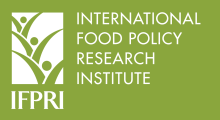Resource information
Improving the long-term sustainability and resilience of smallholder agriculture in Africa is highly dependent on conserving or improving the quality of the natural resource. Conservation agriculture is conceived around more integrated and effective management strategies for provisioning both food and other ecosystem services. If unattended to, land degradation would reduce agricultural productivity and increase pressure on marginal environments in the Tigray highlands of Ethiopia, adversely affecting food security and livelihoods of smallholder farmers. This paper answers some pertinent questions about mass mobilization of free compulsory labor for ecological restoration in Tigray. It details perception of changes in climate; the process of collective decisionmaking; resistance, documentation, and enforcement of rules; methods of conflict resolution; knowledge and information networks; arrangements for benefit sharing of communal resources; and the role of gender in mass mobilization for communal work. We analyzed data collected from 20 villages in 3 districts in the Tigray region through a household survey using a structured questionnaire, focus group discussions, and personal observations. The results reveal that the people are motivated to provide their free labor to restore the ecology to increase agricultural productivity and production to avoid food insecurity and improve their general livelihood. Availability of institutions in terms of grassroots organizations and rules and regulations was a major factor in the positive response to the call for action. The commitment of the government at both the national and local levels (through sensitization and mobilization for group formation and provision of tools and construction materials); the ethnic homogeneity of the population; and the existence of the Orthodox Church, where most of the people were members, were major factors for the success of the community mobilization for collective action in Tigray. Social networking with neighbors, the clergy, and leaders of grassroots organizations provided the knowledge and information on climate variability and solutions required to conserve the ecology and improve human livelihood. We also observed that there were no differences in gender division of labor except that women worked half the workload of men in a day; the women also did the cooking and cleaned up the surroundings after eating at the site. Both men and women played active roles in leadership with regard to mobilization of people, communal work planning and scheduling, conflict resolution, and sharing of community products. An impact assessment of the ecological conservation in Tigray on agricultural productivity and production and food security would be useful. It will be interesting to replicate the study in other areas in Ethiopia and other countries where the societies may not be homogenous to find out the level of commitment of the people to communal work.


